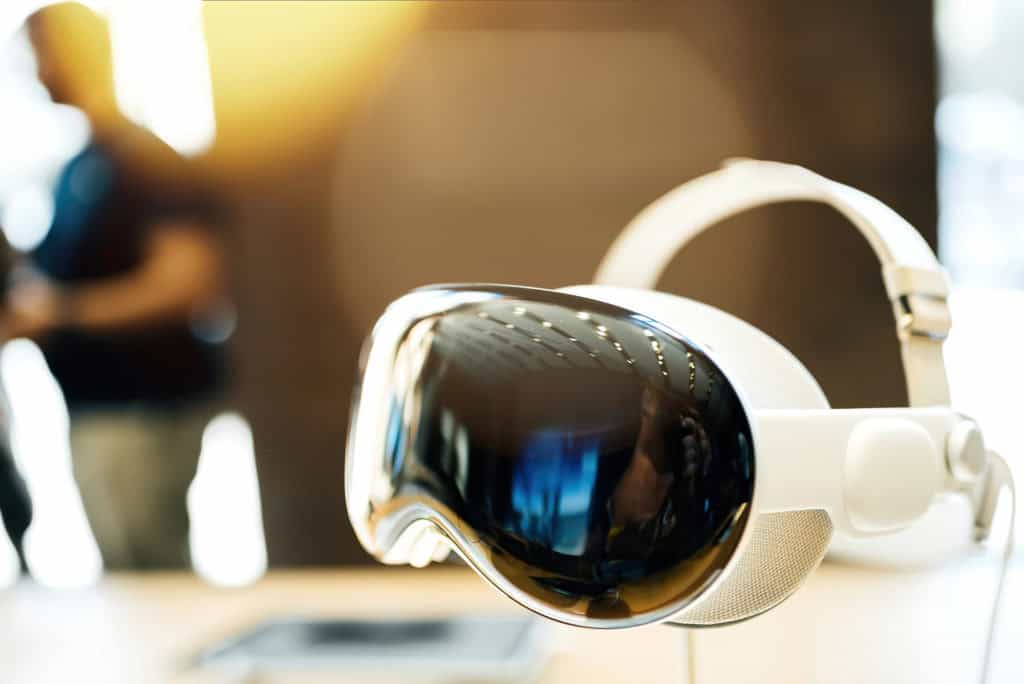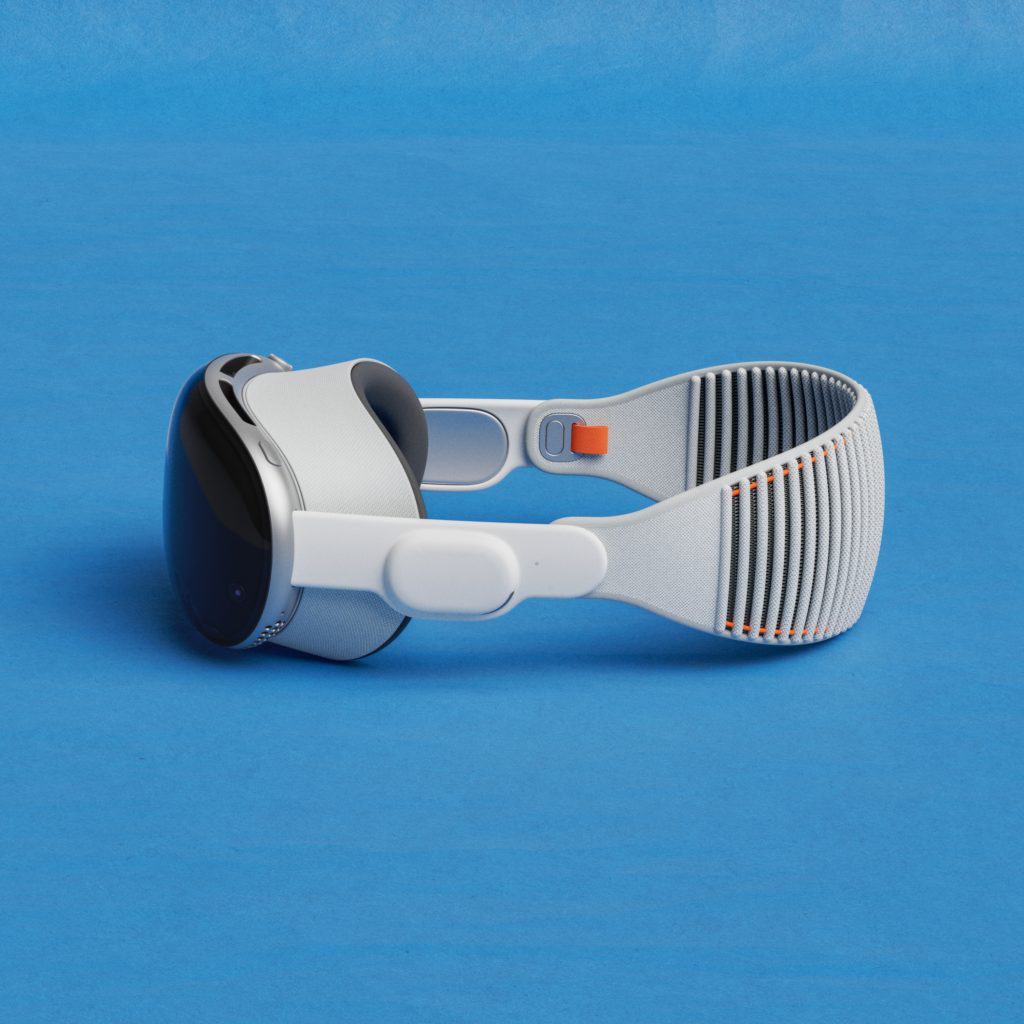Apple is reportedly developing a more budget-friendly version of its high-end spatial computing headset, the Vision Pro. Priced at approximately $2,000, this new device, simply named “Apple Vision,” is expected to hit the market as early as 2025, according to a report by Bloomberg’s Mark Gurman. The Apple Vision aims to broaden the appeal of Apple’s cutting-edge virtual reality offerings by offering a reduced price point while still delivering an engaging spatial computing experience.
Vision Pro’s Lower-Cost Counterpart
The Vision Pro, released in February with a $3,500 price tag, has seen limited uptake due to its high price and specific design challenges. According to market research firm IDC, Apple is projected to sell fewer than 500,000 Vision Pro units this year, indicating a clear need for a more accessible model.
In contrast, Apple expects the Vision headset to sell at least twice as many units as the Vision Pro, reflecting a desire to make spatial computing more accessible to the general public. This move aligns with Apple’s efforts to establish a larger footprint in the virtual and augmented reality market, where price is a major barrier for many consumers.
How Apple Plans to Cut Costs
To make the Vision headset more affordable, Apple is likely to forgo some premium features and materials found in the Vision Pro. For instance, Apple may:
- Use Less Expensive Materials: The Vision Pro’s aluminum and glass exterior could be replaced with plastic or other cost-effective alternatives.
- Opt for a Less Powerful Processor: The Vision headset may be equipped with a less advanced processor, which would still provide a smooth user experience but at a lower cost.
- Omit the EyeSight Display: The unique EyeSight feature that displays the user’s eyes on the outside of the headset is expected to be removed, as it’s not essential for most users.
- Lower Resolution Displays: Previous reports suggest that the Vision headset may feature larger, lower-resolution displays, reducing costs while maintaining visual quality.
By implementing these changes, Apple aims to retain key functionality while appealing to budget-conscious consumers who still want a premium VR experience.
Vision Products Group’s Focus on Accessibility
Apple’s Vision Products Group is reportedly focusing on this more affordable model as a priority, recognizing the need for broader market appeal. While the Vision Pro has been praised for its innovative features, its high price and ergonomic limitations have restricted its potential audience.
In designing the Vision headset, Apple appears to be targeting a more mainstream market without compromising the core aspects of spatial computing that define the Vision Pro. This approach allows Apple to meet demand for a more affordable headset while solidifying its position in the growing AR/VR market.
Expected Features of the Apple Vision Headset
Although the Apple Vision is positioned as a more affordable alternative, it is expected to retain several key features that make the Vision Pro a compelling device. These include:
- Spatial Audio Support: Apple’s commitment to immersive audio will likely remain, with spatial audio and noise-canceling capabilities.
- Broad App Compatibility: The headset should support the same applications and platforms as the Vision Pro, offering a wide range of experiences from productivity to gaming.
- Hand and Eye Tracking: Core functionality for intuitive control is expected to be included, though possibly with fewer sensors than the Vision Pro.
By focusing on these core features, Apple aims to deliver a compelling experience without the premium extras that drive up the cost of the Vision Pro.
Development of Second-Generation Vision Pro and Smart Glasses
Alongside the development of the Apple Vision, Apple is also working on a second-generation Vision Pro, slated for release in 2026. This upgraded model is expected to feature a faster processor but otherwise retain similar hardware and design. This incremental upgrade aligns with Apple’s pattern of steady technological refinement over time.
In addition to headsets, Apple is exploring the potential of smart glasses, which could offer an even more integrated and lightweight wearable experience. This project is in its early stages but reflects Apple’s interest in diversifying its wearable offerings and expanding the possibilities of augmented reality.
Market Outlook and Sales Projections
Apple’s move to offer a more affordable Vision headset is a strategic effort to capture a larger share of the VR market. With the Vision Pro’s sales falling below expectations, the lower-cost Vision aims to address a wider consumer base. Apple anticipates that the more accessible pricing will enable it to sell more units, which could enhance its competitive position against rivals in the AR/VR industry, such as Meta and Sony.
As the tech giant strives to innovate within the spatial computing space, its success may depend on balancing advanced features with accessible pricing. By making spatial computing more attainable, Apple has the opportunity to transform its Vision line into a more widely adopted product line.
MacReview Verdict
The anticipated $2,000 Apple Vision headset represents Apple’s effort to expand its presence in the augmented and virtual reality markets by making its technology accessible to a broader audience. By offering a more affordable model, Apple could attract a wider range of users interested in exploring spatial computing. As details about the Apple Vision continue to emerge, it will be interesting to see how this new device will shape the future of wearable technology and enhance Apple’s role in the AR/VR landscape.



